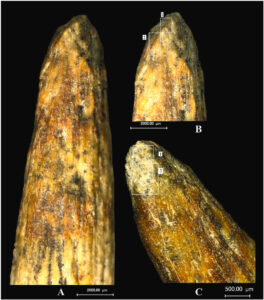A team of international archaeologists has uncovered what is currently the oldest known spear tip found in Europe—remarkably, it was made not by modern humans, but by Neanderthals.

Location and Discovery Process
The spear tip was unearthed in a cave situated in Russia’s North Caucasus region, embedded in an ancient layer of sediment. Although the artefact was originally excavated in 2003, comprehensive scientific analysis has only been conducted recently. The research, published in the Journal of Archaeological Science, suggests that Neanderthals once inhabited the site. Additional finds at the location included animal bones and remnants of a hearth.
To examine the artefact thoroughly, researchers utilized advanced techniques including spectroscopy, CT scanning, and microscopy.
Spear Tip Characteristics
- The spear tip measures about 9 centimeters in length.
- It is crafted from the bone of a large animal, likely a bison.
- Stone tools were used to shape it, and it was attached to a wooden shaft using natural tar—demonstrating deliberate tool-making skills.
- The presence of micro-fractures suggests the spear tip struck a solid object, indicating active use in hunting or conflict.
- Minimal wear implies it was used successfully soon after it was produced.
Dating and Origins
Radiometric dating places the artefact at between 70,000 and 80,000 years old—predating the arrival of Homo sapiens in Europe by at least 25,000 years. This confirms that Neanderthals, not modern humans, crafted the tool.
Who Were the Neanderthals?
Neanderthals (Homo neanderthalensis) were an extinct species of early humans, closely related to Homo sapiens. They lived across Europe, Central Asia, and parts of the Middle East. Genetic studies indicate they split from the lineage leading to modern humans about half a million years ago. Neanderthals vanished roughly 40,000 years ago, shortly after Homo sapiens began expanding across Europe. However, traces of Neanderthal DNA—about 1–2%—persist in today’s non-African human populations, proving interbreeding occurred.
Neanderthal Traits and Culture
- Physically robust and well-suited for cold environments, with stocky builds and powerful musculature.
- Distinct facial features included prominent noses, angled cheekbones, and a receding chin.
- Their brains were as large as, or larger than, those of modern humans when scaled to body size.
- They were skilled hunters who used complex stone and bone tools, built shelters, made clothing, and controlled fire.
Evidence of symbolic behavior includes the use of personal ornaments and the intentional burial of their dead, sometimes with grave goods—an advanced practice not observed in earlier human ancestors.




